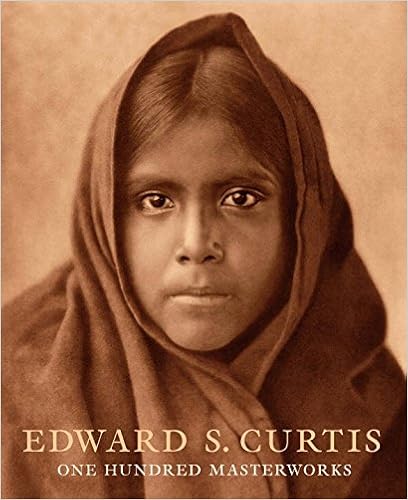
Minneapolis-based Christopher Cardozo has almost single-handedly rescued from oblivion the American Indian photographs of Edward Curtis, producing eight books and exhibitions that have been seen in more than 40 countries. He repeats his formula of sepia prints on cream paper in this handsome book. Curtis produced more than 2,200 photos during his 25-year effort to document the tribes of North America. The “master” set includes unusual images, including a rare 1908 color photo of an Indian with green-striped braids
Showcasing Edward Curtis's most compelling and important works, this beautiful publication highlights both iconic and rarely seen images, demonstrating his artistry and mastery of photographic mediums, and his commitment to documenting and preserving for posterity the Native Americans’ traditions and ways of life. Widely acknowledged as the world’s leading authority on Edward Curtis, author Christopher Cardozo has curated a groundbreaking monograph on internationally renowned photographer Edward Curtis. Curtis’s magnum opus, The North American Indian, the most extensive photographic portrait of Native Americans, is a crucial contribution to the history of America’s Native peoples as well as a testament to his tireless efforts to document and express the spirit of over eighty distinct tribal groups. In this book Cardozo selected from an unmatched private archive of rare and unique Curtis original, vintage photographs. Never before have Curtis’s finest photographs been presented with such fidelity and power in book form. Every style, subject matter, cultural and geographic area, and print medium Curtis worked in is included. The stunning photographs are further enriched and contextualized by essays from world-recognized experts. Creating a unique visual mosaic, the photographs give the viewer a deep, rich understanding of Curtis’s accomplishments as an artist, while exploring the crucial role the Native American participants played in co-creating this iconic body of work.
No comments:
Post a Comment